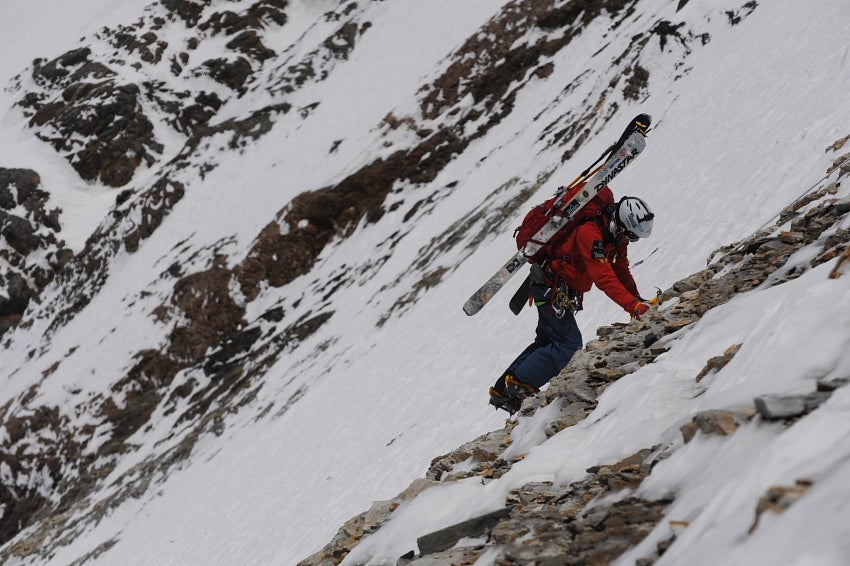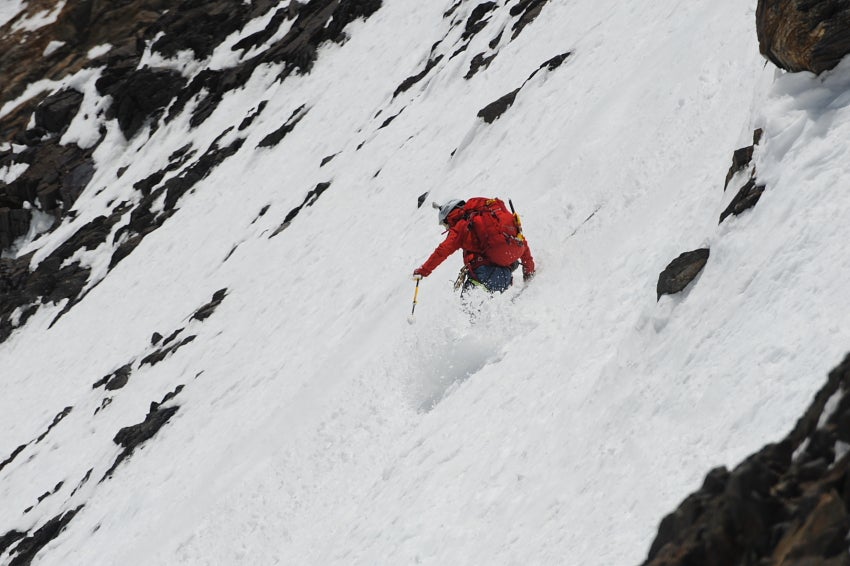
“Dead man in Camp 2. Bulgarian.” Lakpa’s news was such a surprise, we had a hard time believing it. For one thing, the last three days of warmth and sun without a breath of wind couldn’t have been more perfect. Base camp had been a virtual ghost town, with all climbers taking advantage of the good fortune to move up the mountain. No, it couldn’t be true. I didn’t even know there was a Bulgarian in base camp. But you don’t argue with a woman who tells you she’s a lama.
Just the day before, Frippe and I had been descending from Camp 3 at 7,100 meters (23,294 feet). My frostbitten fingers were warm and snug in the warmest
K2 was revealing her softer side but it was a face I knew better than to grow too fond of. Base camp is a small community and news travels fast. It seems as though Petar Unzhiev arrived in BC less than a week ago, parking up with the ATP crew whose permit he was on. Like every other climber he saw the extraordinary good weather and couldn’t resist getting up the mountain.
Within three days of arriving in base camp, Petar, along with his HAP (high-altitude porter), went directly to Camp 1 on the Abruzzi rather than making the usual stop at advanced base camp. The next day, instead of following the normal rules of acclimatization and returning to the lower elevation of base camp the team climbed to Camp 2 at about 6,700 meters (21,982 feet), where others on the route reported that Petar began experiencing problems. However,they assumed the HAP was watching out for him. That night, those whose tents were pitched next to Petar’s heard labored breathing–not uncommon at 7,000 meters (22,966 feet), where the air pressure is less than half that at sea level.
Again, they assumed the HAP that they believed to be in the tent with Petar would call for help if needed. As it turns out, after pitching the tent and brewing up, the HAP had returned to base camp without telling any of the others at C2.

It is believed that Petar most likely died from high altitude cerebral edema, or HACE. As explained in the three high-altitude medical books that he had with him but apparently hadn’t gotten around to reading, HACE is a swelling of the brain commonly caused by climbing too high too fast. Petar’s death is a tragic loss, but it's not stopping Frippe and I from planning our next trip up the mountain. If the weather cooperates, we’llleave base camp on the 24th and hopefully make our summit push on the 27th. There has been heavy snowfall and strong winds up high over the last two days, which is cause for concern and may push our plans back a day or two. In any case, I can already imagine the sanctimonious outrage in forums and message boards across the ‘net labeling us foolish, selfish, irresponsible and suicidal.
Some of the accusations are fair–selfish, for sure–however, most are not, and as a person who is heading back up the same mountain that just killed Petar perhaps I can provide some insight into what makes us want to put ourselves at such risk. While there’s certainly no question that this is a dangerous game we’re playing, there’s nobody here with a death wish. Quite the contrary, you could say that Frippe and I have a life wish, meaning we want to squeeze every bit of life out of every second of every day. And there’s just no way we can do that if we’re not living, right?
For sure, it’s sad when people die, but it’s something that’s going to happen to every single one of us. In the end, all that really matters is what you do with the time between the day you were born and that inevitable day of departure. Which is why we’re here. Many people see mountains like K2 and are paralyzed by fear. “You can’t goup there; you might get hurt or even die!” On the other hand, there are others, like us, who see big mountains and are empowered by the massive challenge, the thrill of the adventure and the possibility we see in the impossible. To act on this empowerment is to live, to turn our backs on it is to suffer a slow, agonizing death.
In attempting to make the first ski descent of K2, without supplementary oxygen, without Sherpa or HAP support, climbing in good style with respect and admiration for the power and beauty of the mountain, Fredrik has the chance to do something truly extraordinary in his life, and I’m not simply talking about the first descent. I’m talking about the incredibly rare opportunity this man has to pursue his wildest, mostheartfelt dream. Is that worth the risk? In the end, there is only one personwhose answer to that question matters.
Petar’s death is a sad loss and our thoughts and prayers go out to his family. We hope in time they take solace in knowing that he died doing something he loved, in one of the most beautiful places on Earth. As one climber told us after he came down from Camp 2, “It looks as though he died peacefully. It looks as though he died…happy.”
–Trey Cook
To learn more of Fredrik Ericsson’s past expeditions and his quest to ski the world’s three highest mountains check out .